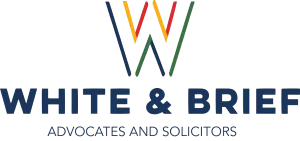- within Transport topic(s)
- with Senior Company Executives, HR and Finance and Tax Executives
- in European Union
- in European Union
- with readers working within the Accounting & Consultancy, Retail & Leisure and Law Firm industries
Over the past decade, drones have steadily evolved from experimental gadgets to mainstream commercial tools. Today, they are widely used across logistics, infrastructure inspection, surveillance, disaster management, and agriculture. Their versatility has made them indispensable to both public and private sectors.
Globally, countries like the United States, China, and Israel continue to lead in defence-oriented and research-driven drone technologies. These nations have invested heavily in innovation, scaling up both military and civilian applications, and setting global benchmarks for advanced unmanned systems.
While India lags behind global leaders in terms of scale and defense innovation, its standout achievement lies in building a structured and evolving regulatory framework. By creating rules that strike a balance between security concerns and industry needs, India has prioritized governance as the cornerstone of its drone ecosystem.
Early Legal Foundations
India's regulation of drones is rooted in aviation law. The Aircraft Act, 1934, and the Aircraft Rules, 1937, classify drones as "aircraft." While this provided a statutory basis, it also created compliance hurdles because rules intended for manned aviation were applied to small, unmanned vehicles.
Before 2018, operators needed multiple clearances from defense, telecommunications, and aviation authorities. This lack of a unified system discouraged innovation and slowed adoption. A significant shift came with the Drone Rules, 2021, which replaced the fragmented regime with a single, risk-based framework. These rules simplified approvals, reduced fees, and introduced a digital compliance platform.
At the core of this reform is the Digital Sky Platform, a single-window online system developed by the Directorate General of Civil Aviation (DGCA) to manage all drone-related activities. It enables registration, flight permissions, airspace zoning, and compliance monitoring through automated and paperless processes, promoting transparency and operational ease.
Key provisions include:
- Registration of all drones on the Digital Sky Platform.
- Weight-based classification, ensuring regulation is proportionate to risk.
- Airspace zoning through digital mapping of Green, Yellow, and Red Zones.
- No Permission, No Take-off (NPNT): mandatory automated clearance before flights.
Compared with earlier cumbersome approvals, this reform streamlined compliance and encouraged commercial deployment.
Drone Classification and Registration
The framework classifies drones by weight, with obligations scaling accordingly:
- Nano (≤250 grams): Exempt from registration for non-commercial use; however, commercial or revenue-linked use requires registration. Operations are limited to uncontrolled airspace below 50 feet.
- Micro (251 g – 2 kg): Registration is mandatory for all non-recreational use. A Remote Pilot License is needed for commercial operations. NPNT protocols apply, and operators must comply with Ministry of Home Affairs guidelines on data.
- Small (2 – 25 kg): Requires registration, a Remote Pilot License, and an Unmanned Aircraft Operator Permit for commercial use. Operators must maintain flight logs and carry third-party liability insurance regulated by the Insurance Regulatory and Development Authority of India (IRDAI).
- Medium (25 – 150 kg) and Large (>150 kg): The highest level of compliance applies, including coordination with air traffic control, submission of safety manuals, and DGCA approvals.
This weight-based approach ensures proportionality, with low-risk drones facing lighter requirements, while heavier and riskier drones remain under close oversight.
Airspace Zoning and Strategic Locations
The 2021 Rules also introduced airspace zoning through the Digital Sky Platform:
- Green Zone: Up to 400 feet above ground level, away from airports and sensitive areas, with most flights permitted without prior clearance.
- Yellow Zone: Controlled airspace, generally 5–12 km around airports, where all operations need authorization.
- Red Zone: Restricted areas including within 5 km of airports, 3 km of state or national capitals, and strategic locations such as defence facilities, nuclear plants, and government security complexes. Flights here require explicit central approval.
Violations of the Aircraft Act, 1934, are punishable with penalties, including fines and imprisonment. If committed by an organization, responsibility extends to both the operator and its designated officer.
Legal and Compliance Framework
India's drone regulations are underpinned by a strong legal and compliance framework designed to ensure transparency, accountability, and operational safety. The framework not only outlines licensing and operational permissions but also integrates technology-enabled compliance mechanisms that act as real-time safeguards against regulatory breaches.
A core feature is the NPNT system, which mandates that every drone flight must receive prior digital authorization from the Digital Sky Platform before commencing operations. This ensures that only compliant drones, registered and approved under the prescribed categories, are permitted to take off. By automating permissions through digital systems, the government effectively eliminates the risk of unauthorized flights and enforces adherence to safety and airspace norms.
Furthermore, operators are required to maintain electronic logbooks, which serve as comprehensive records of flight operations, including details of flight paths, duration, altitude, and operator credentials. These digital records promote transparency and facilitate regulatory audits and investigations, allowing authorities to review operational history and assess compliance with applicable rules.
Together, these technology-driven measures reflect India's shift toward a digitally integrated regulatory regime, where compliance is monitored in real-time, minimizing human intervention and enhancing enforcement efficiency.
Legal Foundation and Policy Amendments (Post-2021 Developments)
Building on this technology-driven governance model, a series of subsequent amendments have refined the framework to strike a balance between operational ease and national security considerations.
In February 2022, authorized drone training schools were empowered to issue Remote Pilot Certificates directly, replacing the earlier DGCA-exclusive certification process. In August 2022, the Yellow Zone radius around airports was reduced, expanding Green Zones and facilitating smoother access for commercial operators. Further reforms in 2023 advanced operational flexibility by permitting night operations, easing restrictions on importing drone components, and introducing controlled export of civilian drones.
Collectively, these legislative and policy refinements illustrate India's transition from initial liberalization to a more compliance-oriented framework in sensitive zones, while continuing to foster innovation and commercial growth.
Key Insights for Strategic Decision-Making
- Compliance as a Growth Lever: Integrate licensing, airspace rules, and NPNT protocols into daily operations. Viewing compliance strategically ensures efficiency and credibility with regulators.
- Digital Integration: Leverage digital platforms for flight planning, real-time tracking, and automated reporting to reduce errors and ensure regulatory adherence.
- Risk-Based Operations: Apply proportional measures based on drone weight and risk. Lighter drones require straightforward controls, while heavier drones require stricter oversight, insurance, and operational safeguards.
- Training and Capacity Building: Work with certified training organizations, develop pilot skills, and ensure staff awareness of operational and compliance requirements.
- Future-Ready Planning: Prepare for upcoming reforms such as BVLOS operations, data governance, and cross-border operations to stay competitive and compliant.
- Collaboration with Regulators and Industry: Maintain dialogue with authorities and industry partners to stay updated on policy changes, emerging technologies, and best practices.
Financial and Industrial Measures
Alongside regulation, policy incentives have been introduced:
- Production Linked Incentive (PLI) Scheme, 2021: Provides financial incentives to drone and component manufacturers achieving value addition targets.
- Import Restrictions, 2022: Prohibit the import of fully built drones (except for defense, R&D, and security), while allowing import of parts to encourage domestic assembly and manufacturing.
- Export Liberalization, 2023: Introduces a general authorization process for the export of civilian drones within specified payload and range limits.
These measures demonstrate how regulation is used not only for compliance but also to guide industrial strategy.
Emerging Challenges
Despite significant regulatory reforms, the drone ecosystem in India continues to face several unresolved challenges that may impact scalability, operational efficiency, and international competitiveness.
One pressing issue is BVLOS (Beyond Visual Line of Sight) operations. While BVLOS holds immense potential for logistics, surveying, and emergency services, current approvals remain largely experimental. The absence of a fully operational regulatory framework for routine commercial BVLOS flights restricts large-scale deployment. Developing comprehensive BVLOS rules with clear operational, safety, and liability standards is critical to unlocking the full potential of drone technology in India.
Cross-border operations present another gap, as the current regulatory framework does not provide guidelines for international drone deliveries or cross-border drone-based services. Without a formalized protocol, Indian operators cannot fully participate in global supply chains or collaborate internationally, limiting competitiveness in drone logistics and e-commerce. Establishing clear standards for customs, airspace access, and cross-border compliance will be essential to enable safe and lawful international operations.
Data governance is also an emerging concern. Drones routinely collect geospatial and video data, which may include sensitive information about infrastructure, public spaces, and private properties. Operators must ensure that such data collection, storage, and transmission comply with the Digital Personal Data Protection Act, 2023, and cybersecurity norms. The need for data localization, secure storage, and controlled access presents both regulatory and technical challenges, particularly for companies scaling across multiple jurisdictions.
Integration with telecommunication networks poses another challenge. As drones increasingly rely on wireless connectivity for navigation, telemetry, and real-time data transfer, regulations must adapt to emerging technologies like 5G and 6G. Ensuring uninterrupted connectivity, low-latency control, and network security, while coordinating with telecom providers, will be essential to maintain safety and reliability.
Finally, aligning with international standards is crucial for India's drone sector to remain globally competitive. Harmonization with norms established by the International Civil Aviation Organization (ICAO) and other global aviation bodies will facilitate interoperability, ensure compliance with safety standards, and promote cross-border collaboration. Without such alignment, Indian operators may face barriers to exporting services or integrating with global supply chains.
For decision-makers, three priorities stand out:
- Embedding compliance, including licensing, NPNT, and zoning, into operations.
- Leveraging incentives while preparing for stricter rules in sensitive areas.
- Anticipating future reforms around BVLOS, data, and global harmonization.
The growth of drones in India is therefore not simply technological; it reflects a transformation where regulation itself is the enabler of safe and scalable adoption.
Conclusion
India's drone regulation has evolved from a fragmented system of clearances to a structured, risk-based, and digital-first approach. The Drone Rules, 2021, and subsequent amendments reduced compliance burdens for low-risk drones while ensuring strict oversight of high-risk operations. Industrial policies such as the PLI scheme, import restrictions, and export liberalization complement the regulatory regime, underscoring India's commitment to fostering a secure, transparent, and innovation-driven drone ecosystem.
Edited By Romaan Chowdhry Deputy Director
The content of this article is intended to provide a general guide to the subject matter. Specialist advice should be sought about your specific circumstances.





